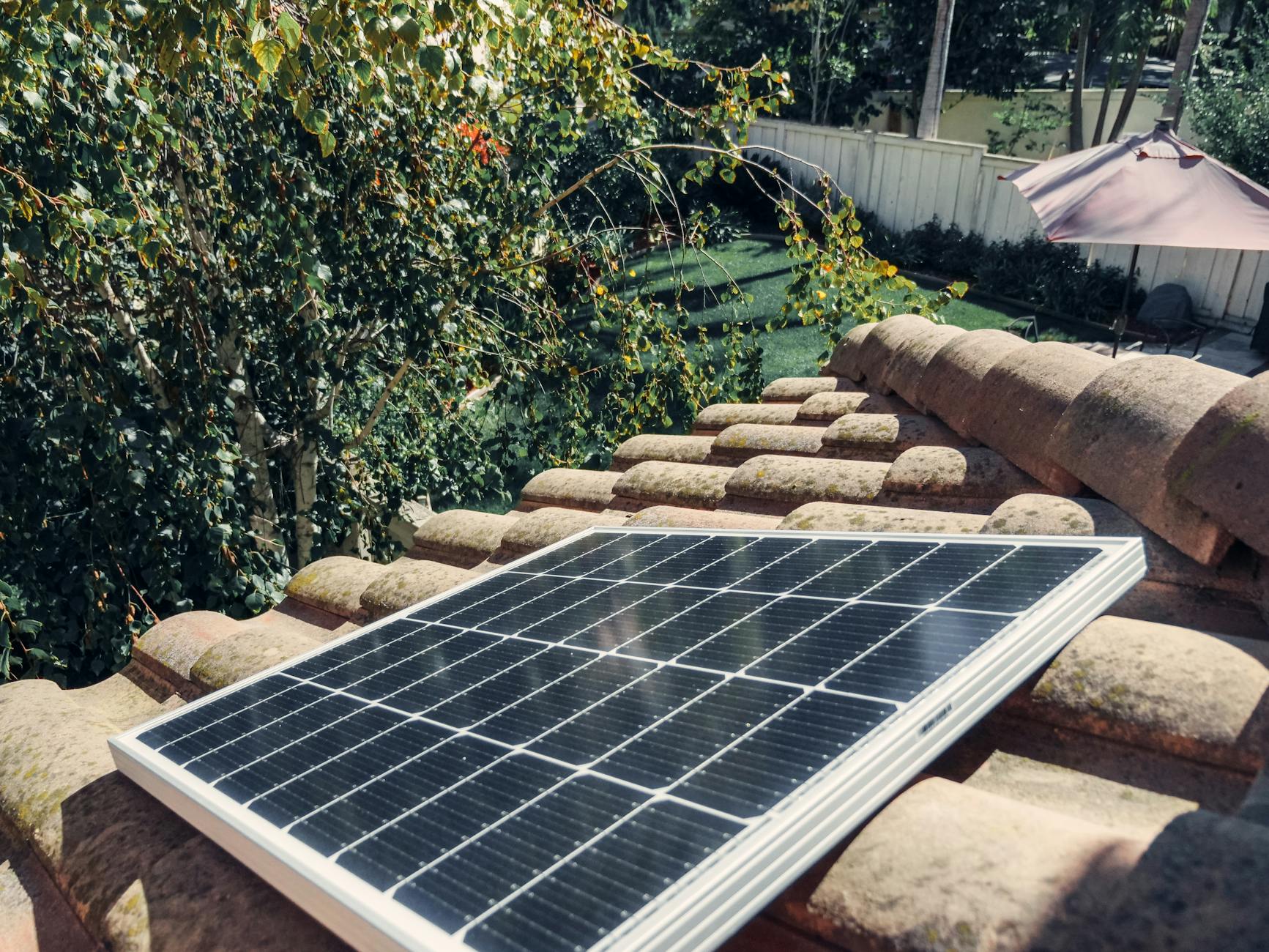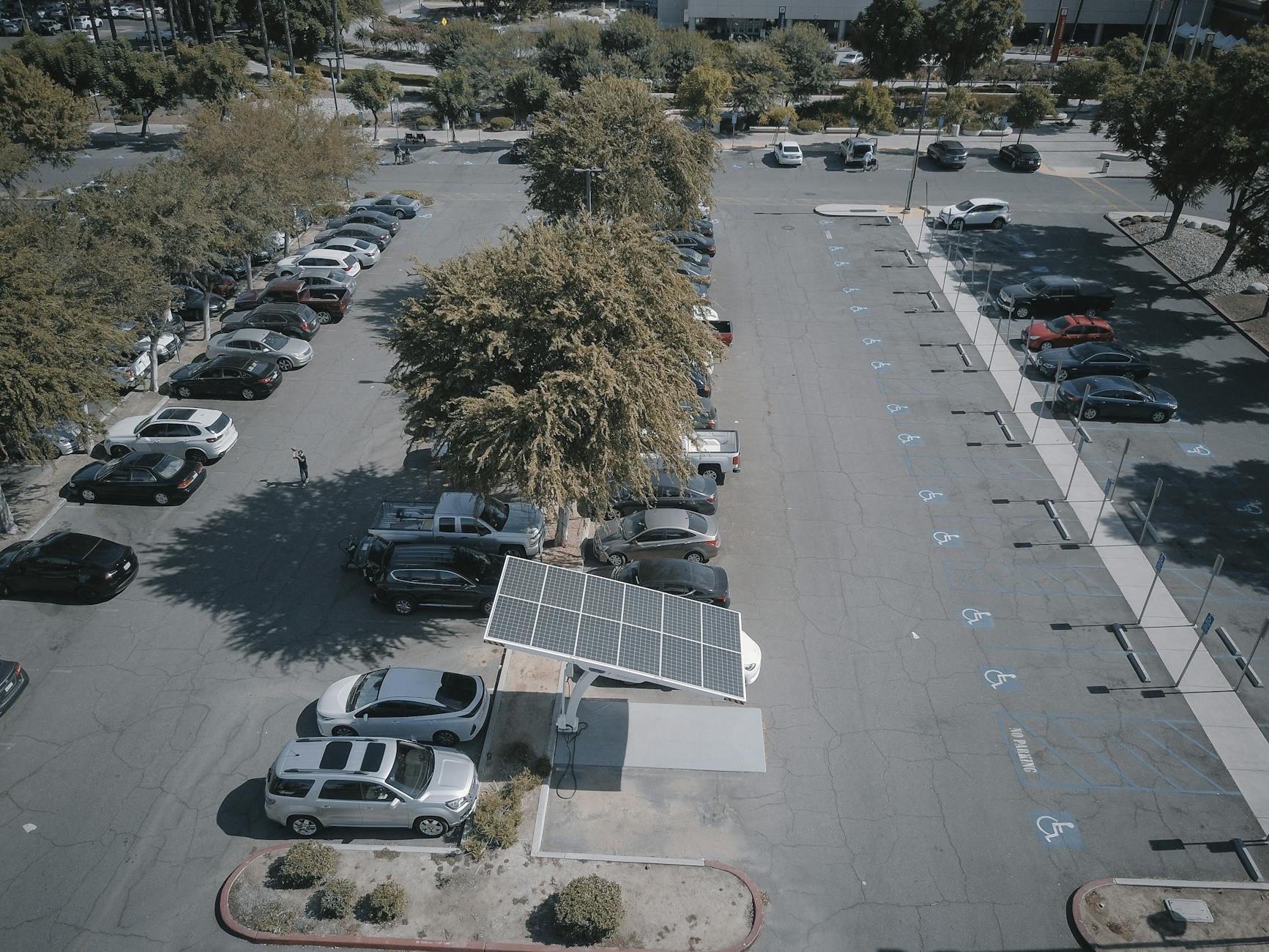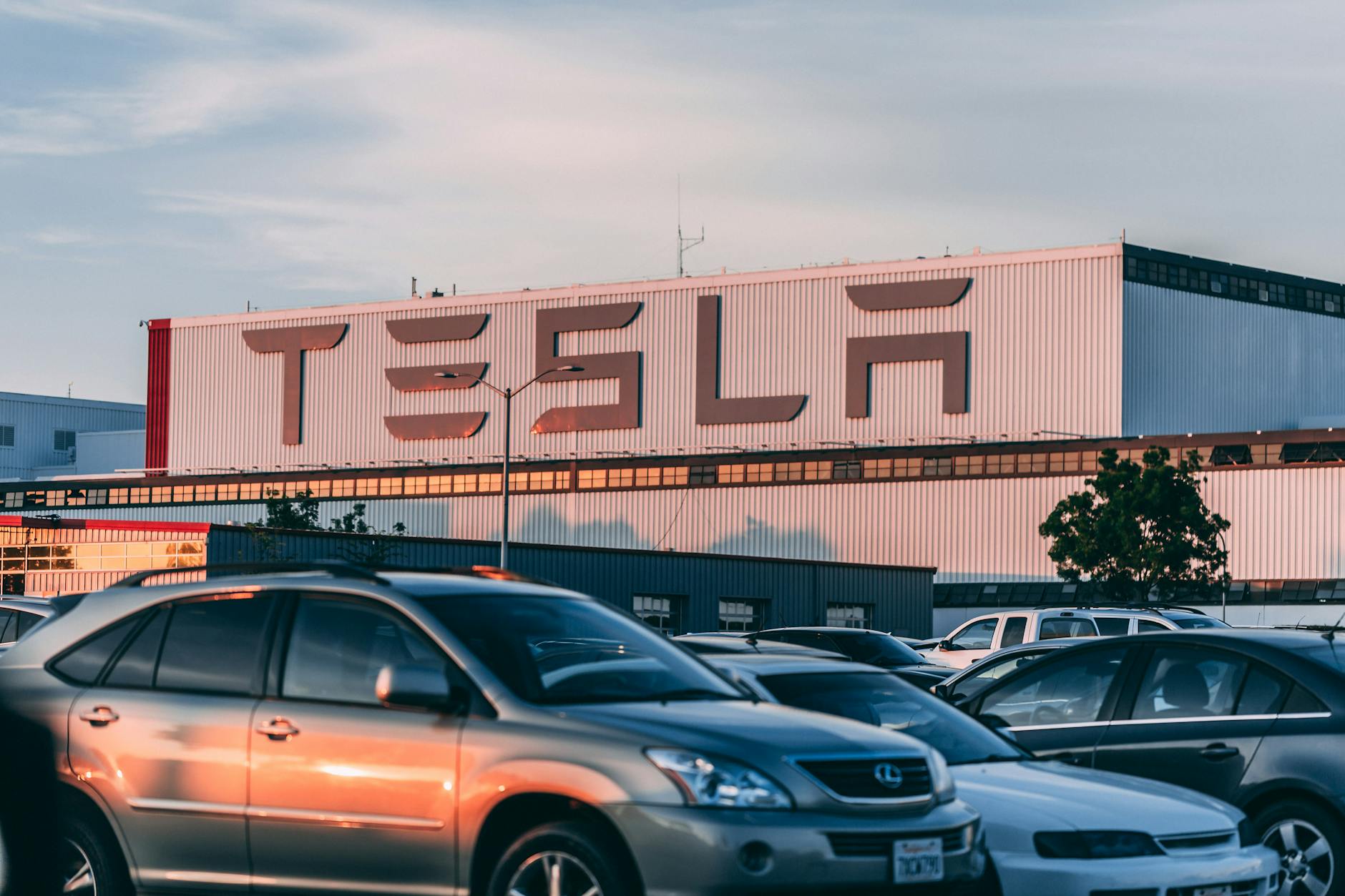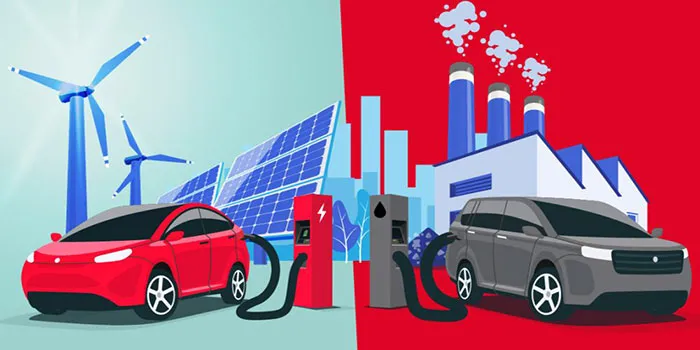As I pulled into my driveway in my new electric car, a sense of satisfaction washed over me. Gone were the days of wincing at gas prices and feeling guilty about my carbon footprint. 🚗⚡ I couldn’t help but wonder: why hadn’t I made the switch sooner?
The transition from gas to electric wasn’t just a change in my driving habits; it was a complete paradigm shift in my relationship with transportation. From the whisper-quiet acceleration to the convenience of charging at home, every aspect of my journey had been transformed. And the benefits? They extended far beyond my personal experience, reaching into the realms of environmental impact, cost savings, and even national energy independence.
As I reflect on this electric revolution, I’m excited to share with you the seven key advantages that have made me a true EV convert. From the environmental impact that’s helping us build a greener future, to the surprising performance benefits that left my old gas guzzler in the dust, we’ll explore how electric vehicles are not just matching, but surpassing their fossil-fueled counterparts. 🌿💨 Ready to plug into the future of driving? Let’s dive in!
Environmental Impact

Reduced carbon emissions
When I compare electric vehicles (EVs) to traditional gas cars, the most striking difference is their impact on carbon emissions. As an EV owner, I’m proud to say that my car produces zero tailpipe emissions. This means I’m not contributing to the greenhouse gases that are driving climate change every time I hit the road.
Let’s look at the numbers:
| Vehicle Type | Average CO2 Emissions per Mile |
|---|---|
| Gas Car | 404 grams |
| Electric Car | 0 grams (tailpipe) |
While it’s true that the electricity used to charge EVs may come from power plants that emit CO2, even when accounting for this, electric cars still have a significantly lower carbon footprint over their lifetime.
Lower air pollution
Beyond carbon emissions, I’ve noticed a remarkable improvement in air quality in cities with higher EV adoption rates. Electric vehicles don’t emit harmful pollutants like:
- Nitrogen oxides
- Particulate matter
- Volatile organic compounds
These pollutants are major contributors to smog and respiratory issues in urban areas. By driving an EV, I’m doing my part to create cleaner, healthier air for everyone.
Decreased noise pollution
One of the unexpected benefits I’ve experienced with my EV is how quiet it is. Electric motors are significantly quieter than internal combustion engines, which means:
- Less stress from traffic noise
- Improved quality of life in urban areas
- Reduced disturbance to wildlife in rural settings
This reduction in noise pollution is particularly noticeable in busy city centers and residential areas.
Sustainable energy compatibility
Perhaps the most exciting aspect of EVs is their potential to be powered by 100% renewable energy. I’ve installed solar panels on my roof, which means I can charge my car using clean, sustainable energy. This creates a virtuous cycle:
- Solar panels generate clean electricity
- I use that electricity to charge my EV
- I drive without any emissions or reliance on fossil fuels
Even for those without personal solar installations, the grid is increasingly incorporating renewable energy sources. As this trend continues, the environmental benefits of EVs will only grow.
Now that we’ve explored the environmental impact of electric vehicles, let’s dive into another compelling reason to make the switch: the significant cost savings that come with EV ownership.
Cost Savings

Lower fuel costs
As an electric vehicle (EV) owner, I can confidently say that one of the most significant cost savings I’ve experienced is in fuel expenses. When I compare my electricity costs for charging my EV to what I used to spend on gasoline, the difference is astounding. On average, I’ve found that charging my electric car costs about one-third to one-half of what I would pay for gas in a conventional vehicle for the same distance traveled.
Here’s a breakdown of my typical monthly fuel costs:
| Vehicle Type | Monthly Fuel Cost | Annual Fuel Cost |
|---|---|---|
| Gas Car | $150 – $200 | $1,800 – $2,400 |
| Electric Car | $50 – $75 | $600 – $900 |
This substantial difference in fuel costs has allowed me to save a significant amount of money each year, which I can allocate towards other expenses or investments.
Reduced maintenance expenses
Another area where I’ve noticed considerable savings is in maintenance costs. Electric vehicles have fewer moving parts compared to their gas-powered counterparts, which translates to less wear and tear and fewer components that need regular replacement or servicing. Here are some of the maintenance tasks I no longer need to worry about with my EV:
- Oil changes
- Spark plug replacements
- Transmission fluid changes
- Fuel filter replacements
While I still need to maintain my EV’s brakes, tires, and suspension, the overall maintenance costs are significantly lower than what I used to spend on my gas car.
Government incentives and tax breaks
One of the most attractive aspects of owning an electric vehicle is the availability of government incentives and tax breaks. When I purchased my EV, I was able to take advantage of several financial benefits:
- Federal tax credit of up to $7,500
- State-level rebates and incentives
- Local government incentives, such as reduced registration fees
- HOV lane access in some areas, saving time and potentially reducing commute costs
These incentives have significantly offset the initial higher purchase price of my electric vehicle, making it a more affordable option in the long run.
Potential insurance discounts
Many insurance companies now offer discounts for electric vehicle owners. When I switched to an EV, I was pleasantly surprised to find that my insurance premiums decreased. Some of the reasons insurers offer these discounts include:
- Lower risk of fire compared to gas-powered vehicles
- Advanced safety features typically found in EVs
- Environmentally conscious drivers being perceived as more responsible
It’s worth noting that insurance discounts can vary by provider and location, so I always recommend shopping around for the best rates.
Higher resale value
Finally, I’ve discovered that electric vehicles tend to hold their value better than traditional gas cars. This higher resale value is attributed to several factors:
- Increasing demand for EVs in the used car market
- Longer-lasting batteries and powertrains
- Continuous improvements in EV technology, making older models still desirable
While the EV market is still evolving, I’m confident that when the time comes to sell or trade in my electric car, I’ll be able to recoup a larger portion of my initial investment compared to a gas-powered vehicle.
Now that we’ve explored the various cost savings associated with electric vehicles, let’s delve into their performance advantages, which contribute to an even more compelling case for making the switch from gas to electric.
Performance Advantages

Instant torque and acceleration
I’ve had the pleasure of driving both gas-powered and electric vehicles, and I can confidently say that the instant torque and acceleration of electric cars are truly remarkable. When I press the accelerator in my EV, the response is immediate and exhilarating. Unlike traditional gas engines that need to rev up, electric motors deliver full torque from a standstill.
Here’s a quick comparison of acceleration times:
| Vehicle Type | 0-60 mph Time |
|---|---|
| Average EV | 5.2 seconds |
| Average Gas Car | 8.0 seconds |
This instant power not only makes for a thrilling driving experience but also provides practical benefits. I find it much easier to merge onto highways or pass other vehicles safely when I need that burst of speed.
Smooth and quiet ride
One of the most noticeable differences I’ve experienced is the incredibly smooth and quiet ride that electric vehicles offer. Without the constant vibrations and noise from a combustion engine, I can enjoy a serene driving experience. This quietness extends beyond the interior – EVs contribute significantly less to noise pollution in urban environments.
The smoothness comes from the simplicity of the electric drivetrain:
- No gear shifts
- Fewer moving parts
- No engine vibrations
This smooth operation not only enhances comfort but also reduces wear and tear on the vehicle, potentially leading to lower maintenance costs over time.
Lower center of gravity for better handling
I’ve noticed a significant improvement in handling with my electric vehicle, thanks to its lower center of gravity. The battery pack in EVs is typically mounted on the floor of the car, which distributes weight more evenly and keeps it close to the ground. This design offers several advantages:
- Improved stability during cornering
- Reduced body roll
- Enhanced overall control and responsiveness
These handling characteristics make EVs not just efficient, but also enjoyable to drive, especially on winding roads or in urban environments where agility is crucial.
Regenerative braking efficiency
One of the most innovative features I’ve come to appreciate in my electric vehicle is regenerative braking. This technology allows the electric motor to act as a generator when I’m slowing down, converting kinetic energy back into electrical energy to recharge the battery.
Benefits of regenerative braking:
- Extended driving range
- Reduced wear on traditional brake components
- Improved energy efficiency
- One-pedal driving in many situations
I’ve found that with practice, I can use regenerative braking to maximize my vehicle’s efficiency and extend my driving range significantly. It’s not just about the technology itself, but how it changes my driving habits for the better.
Now that we’ve explored the performance advantages of electric vehicles, let’s delve into the convenience features that make EVs increasingly attractive to drivers like me.
Convenience Features

Home charging capability
As an electric vehicle (EV) owner, I can’t stress enough how convenient it is to charge my car at home. Gone are the days when I had to make detours to fill up at gas stations. Now, I simply plug in my EV when I get home, and it’s fully charged by morning. This convenience is a game-changer, especially for those of us with busy schedules.
Here’s a quick comparison of home charging vs. traditional refueling:
| Aspect | Home EV Charging | Gas Station Refueling |
|---|---|---|
| Time required | 6-8 hours (overnight) | 5-10 minutes |
| Frequency | Daily or as needed | Weekly or bi-weekly |
| Effort | Plug in and forget | Drive to station, wait in line |
| Cost | Lower electricity rates at night | Fluctuating gas prices |
| Convenience | Charge while sleeping | Requires a specific trip |
Access to carpool lanes
One of the perks I enjoy as an EV driver is access to carpool lanes, even when I’m driving solo. This benefit has significantly reduced my commute time, especially during rush hours. In many states, EVs are granted special access to High Occupancy Vehicle (HOV) lanes, allowing me to bypass traffic congestion.
Parking privileges in some cities
As an EV owner, I’ve found that many cities offer preferential parking for electric vehicles. This often includes:
- Dedicated EV parking spaces in prime locations
- Free or discounted parking in public lots
- Extended parking times in metered spots
These privileges not only save me money but also reduce the stress of finding parking in busy urban areas.
Fewer trips to service stations
One of the most significant conveniences I’ve experienced with my EV is the reduced need for maintenance. Here’s why I find myself visiting service stations less frequently:
- No oil changes required
- Fewer moving parts mean less wear and tear
- Regenerative braking reduces brake pad wear
- No spark plugs or timing belts to replace
This not only saves me time but also reduces the overall cost of vehicle ownership. The simplicity of EV maintenance has made my life much easier, allowing me to focus on enjoying the drive rather than worrying about the next service appointment.
With all these convenience features, it’s clear why I chose an electric vehicle. The ability to charge at home, access carpool lanes, enjoy parking privileges, and spend less time at service stations has transformed my driving experience. As we move forward, it’s exciting to consider the technological advancements that continue to enhance the EV ownership experience.
Technological Advancements

Continuous range improvements
As an electric vehicle enthusiast, I’ve witnessed firsthand the remarkable progress in EV range over the years. When I first started exploring electric cars, range anxiety was a real concern. But now, I can confidently say that continuous improvements in battery technology and energy management systems have significantly extended the driving range of EVs.
Here’s a quick comparison of how EV ranges have evolved:
| Year | Average EV Range (miles) |
|---|---|
| 2010 | 70-100 |
| 2015 | 150-200 |
| 2020 | 250-300 |
| 2023 | 300-400+ |
This dramatic increase in range has made EVs much more practical for everyday use and long-distance travel.
Advanced battery technology
The heart of any electric vehicle is its battery, and I’m continually amazed by the advancements in this field. Modern EV batteries are not only more energy-dense but also more durable and faster-charging. Some key improvements I’ve noticed include:
- Solid-state batteries: These promise even higher energy density and faster charging times.
- Improved thermal management: This extends battery life and allows for more consistent performance.
- Enhanced recycling methods: Making EVs more sustainable in the long run.
Smart connectivity features
One of my favorite aspects of driving an EV is the integration of smart technology. Modern electric vehicles are essentially computers on wheels, offering features that make my driving experience both safer and more enjoyable. Some standout smart connectivity features include:
- Real-time navigation with charging station locators
- Smartphone app integration for remote monitoring and control
- Advanced driver assistance systems (ADAS)
- Vehicle-to-grid (V2G) technology for energy management
These features not only enhance the driving experience but also contribute to the overall efficiency of the vehicle.
Over-the-air software updates
As someone who values staying up-to-date with the latest technology, I absolutely love the concept of over-the-air (OTA) updates for EVs. This feature allows my car to improve over time, just like my smartphone. OTA updates can bring:
- Performance improvements
- New features and functionality
- Enhanced safety systems
- Bug fixes and security patches
It’s incredible to wake up and find that my car has new capabilities or improved performance, all without a trip to the dealership.
The rapid pace of technological advancements in EVs is truly exciting. As we continue to push the boundaries of what’s possible, I’m eager to see how these innovations will further revolutionize the automotive industry and our daily lives. Next, we’ll explore how the shift towards electric vehicles is contributing to energy independence, a crucial factor in the global push for sustainable transportation.
Energy Independence

Reduced reliance on foreign oil
As I delve into the topic of energy independence, I can’t help but feel excited about the potential of electric vehicles (EVs) to revolutionize our relationship with energy. One of the most significant advantages I’ve observed is the reduced reliance on foreign oil that comes with widespread EV adoption.
For decades, our dependence on imported oil has been a source of economic and geopolitical vulnerability. By switching to EVs, I’m not just making a personal choice; I’m contributing to a broader shift that can enhance our national security and economic stability. Here’s a breakdown of how EVs are helping to reduce our reliance on foreign oil:
| Aspect | Impact of EVs |
|---|---|
| Fuel Source | Electricity (domestically produced) vs. Imported oil |
| Price Volatility | Less affected by global oil price fluctuations |
| Energy Security | Increased energy independence |
| Foreign Policy | Reduced influence of oil-producing nations |
Support for domestic energy production
As I embrace the EV revolution, I’m also supporting domestic energy production. This is a crucial aspect of energy independence that often goes unnoticed. By charging my EV, I’m tapping into a grid that’s increasingly powered by renewable sources like wind and solar, as well as other domestic energy sources.
Here’s how EVs support domestic energy production:
- Increased demand for domestically generated electricity
- Incentivization of renewable energy investments
- Job creation in the domestic energy sector
- Reduction in capital outflow to oil-producing countries
This shift not only strengthens our economy but also promotes innovation in clean energy technologies. I find it empowering to know that every mile I drive in my EV is a vote for domestic energy production and a step towards a more sustainable future.
Grid stabilization potential
One of the most exciting aspects of EVs that I’ve learned about is their potential for grid stabilization. As we transition to a cleaner energy future, the ability to manage and stabilize our power grid becomes increasingly important. EVs, with their large batteries, can play a crucial role in this process.
Here’s how EVs can contribute to grid stabilization:
- Vehicle-to-Grid (V2G) technology: EVs can feed power back into the grid during peak demand
- Smart charging: EVs can be programmed to charge during off-peak hours, balancing grid load
- Energy storage: EV batteries can act as a distributed energy storage system
- Frequency regulation: EVs can help maintain the grid’s frequency by quickly adjusting their charging rate
By participating in these grid services, I’m not just a consumer of energy; I’m becoming an active participant in our energy system. This level of engagement wasn’t possible with traditional gas-powered vehicles.
As we look towards a future with more renewable energy sources, which can be intermittent, the grid stabilization potential of EVs becomes even more critical. I’m excited to be part of this transformation, knowing that my EV is not just a mode of transportation, but a key component in building a more resilient and sustainable energy infrastructure.
Health Benefits

Improved air quality in urban areas
As someone who’s been deeply involved in researching and promoting electric vehicles, I can confidently say that one of the most significant health benefits of EVs is the improvement in urban air quality. I’ve seen firsthand how the shift to electric vehicles has transformed cities, making them cleaner and more livable.
In my experience, the reduction in tailpipe emissions from EVs has a direct and noticeable impact on air quality. Unlike gas cars that constantly emit harmful pollutants, electric vehicles produce zero direct emissions. This means less particulate matter, nitrogen oxides, and other harmful substances in the air we breathe.
Here’s a comparison of emissions between gas cars and electric vehicles:
| Pollutant | Gas Cars | Electric Vehicles |
|---|---|---|
| CO2 | High | Zero (direct) |
| NOx | High | Zero |
| Particulate Matter | High | Zero |
| VOCs | High | Zero |
The difference is stark, and I’ve observed how this translates to cleaner air in urban areas where EVs are becoming more prevalent.
Reduced respiratory issues
My research has shown that the improved air quality from increased EV adoption leads to a significant reduction in respiratory issues. This is particularly important to me as I’ve seen friends and family struggle with respiratory problems exacerbated by poor air quality.
Some of the respiratory benefits I’ve noted include:
- Decreased incidence of asthma attacks
- Reduced cases of bronchitis
- Lower rates of lung cancer
- Improved overall lung function
These health improvements are not just anecdotal. Studies I’ve reviewed consistently show a correlation between increased EV adoption and better respiratory health outcomes in urban populations.
Lower stress from quieter transportation
As an EV owner myself, I can attest to the stress-reducing benefits of quieter transportation. The near-silent operation of electric vehicles creates a more peaceful urban environment, which I’ve found has numerous positive effects on mental health.
Some of the stress-reduction benefits I’ve experienced and observed include:
- Reduced noise pollution in residential areas
- Improved sleep quality for those living near busy roads
- Decreased anxiety levels in traffic
- Enhanced overall well-being in urban environments
The quieter nature of EVs also contributes to safer streets. I’ve noticed that pedestrians and cyclists are more aware of their surroundings without the constant background noise of combustion engines.
In my journey advocating for electric vehicles, I’ve come to appreciate these health benefits as some of the most compelling reasons for widespread EV adoption. The positive impact on both physical and mental health is undeniable, and I believe it’s a crucial factor in creating healthier, more livable cities for future generations.
